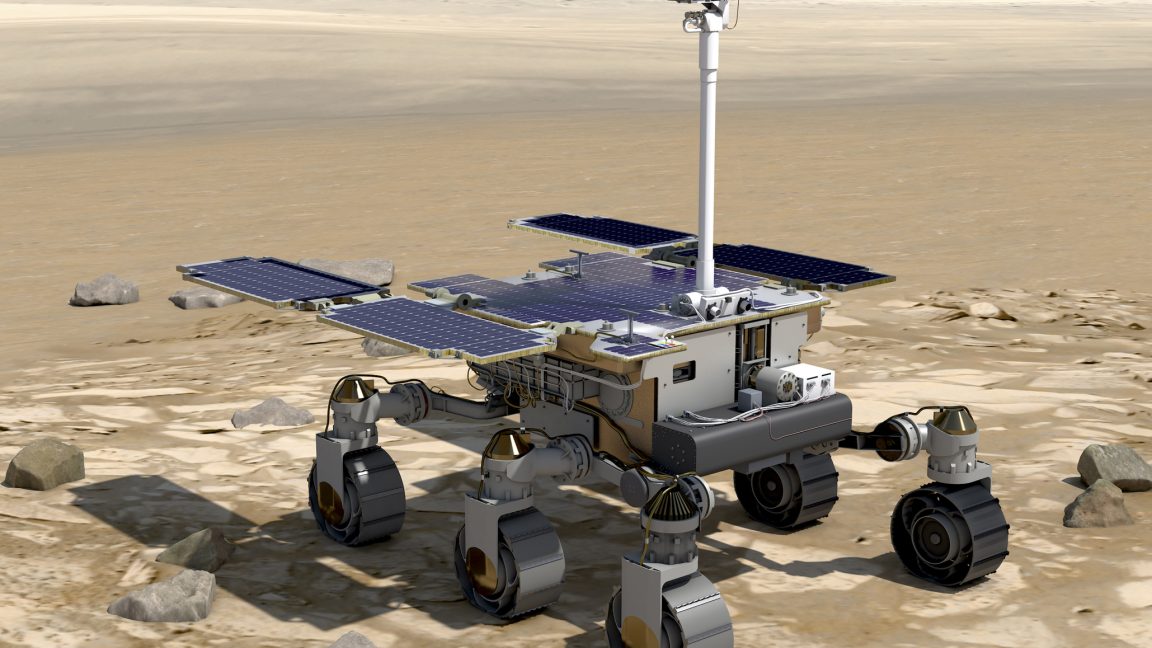Nearly 20 years have passed since the European Space Agency committed to ExoMars.
Oh, ExoMars, what a long, strange trip it has been. Are you ever going to go to space?
The ExoMars mission represents Europe's third attempt to land successfully on Mars, and at a cost of more than $1.3 billion. there is a lot riding on its success. But success is far from assured for a mission that has been whipsawed by geopolitical tensions, budget cuts, and an ever-changing architecture over the last 20 years.
The latest news, announced Sunday, is that Airbus will design and build the lander that will carry the ExoMars down to the surface of Mars. The mission is scheduled to launch no earlier than 2028 on a US rocket. But there have been so many twists and turns in the ExoMars story that it's very difficult to know what will ultimately happen.
Let's go back to the beginning.
Decades in the making
Nearly two decades have passed since the European Space Agency formally committed to funding the ExoMars mission at a ministerial meeting in December 2005. It was to be an international partnership, with an ExoMars launch in 2011 on Russian Soyuz 2-1b rocket. NASA would contribute an exobiology instrument, data relay services from an orbiter around Mars, and technical support for the spacecraft's design.
As Mars discussions between the European Space Agency and NASA deepened in 2008 and 2009, the mission's launch vehicle changed to an Atlas V rocket built by US-based United Launch Alliance. Then, just months later, plans changed again when the European Space Agency partnered with Russia's Roscosmos to launch ExoMars on a Proton rocket.
Four years later, citing budget issues and cost overruns with the James Webb Space Telescope, NASA ended its participation in ExoMars. This was a bitter decision for European space policy officials to swallow, and it pushed them to strengthen ties to Roscosmos. The Russians became major partners, contributing not just a launch vehicle but also providing the critical entry, descent, and landing vehicle that would carry ExoMars down to the surface of Mars.
Then more traditional problems began to hamper the ExoMars mission. Namely, it ran into budgetary and technical problems. A launch date that had already slipped from 2011 to 2018 moved again, to 2020. In the run-up to a launch attempt, testing of the mission's parachutes did not go well. There were successive failures during tests in 2019. By that time, NASA had started to offer some technical help with the parachutes.
More delays
In March 2020, the European Space Agency finally made it official: There would be another delay. The launch of the mission was moving to the next Mars launch window in 2022. The onset of the COVID-19 pandemic proved to be the final straw in pushing back the launch date.
As the opening of the Mars window neared in 2022, with the mission in a final state of preparations, Russia invaded Ukraine. European officials were understandably uncomfortable proceeding jointly with Russia on the project, and in July, they officially terminated work with Russia. Dmitry Rogozin, then the director of Roscomos, responded with an angry message on this Telegram account, calling ESA chief Josef Aschbacher an "irresponsible bureaucrat."
Russia's war against Ukraine—at least at the time—led to a strengthening of ties between Europe and the United States across a number of fronts, including space. Cooperation on the ExoMars was put back on the table. NASA agreed to contribute a rocket for the mission, an engine for the descent module with adjustable thrust, and radioactive heating units. All in all, it was a rather extraordinary resurrection of the mission by European officials, and it was nice to see NASA helping to save the day.
All of this brings us to this weekend's announcement. The European Space Agency announced that Airbus will design and build the landing platform for the ExoMars mission and its Rosalind Franklin rover. This will include the landing structure, the large propulsion system used in the final braking thrust, and the gear to stabilize the lander once on the surface.
"Getting the Rosalind Franklin rover onto the surface of Mars is a huge international challenge and the culmination of more than 20 years’ work," said Kata Escott, managing director at Airbus Defence and Space UK, as part of the new announcement.
What happens next?
But will this be the final word?
Airbus is building at least the third iteration of a lander for ExoMars, and delays are undoubtedly possible ahead of a launch. Two previous European landing attempts, Beagle 2 in 2003 and Schiaparelli in 2016, ultimately failed. There will be a lot of effort to make sure this one works. The 2028 Mars launch window opens in December of that year and runs into early 2029.
Then there are the international partnerships, which have treated the ExoMars program so badly.
The Trump administration is poised to push NASA's exploration program to focus on Mars, and that will likely entail sending SpaceX Starships to the red planet with increasing frequency. SpaceX is aiming for the 2026 launch window for Mars and certainly will be targeting one or more Starships for late 2028. Will NASA, citing redundancy with Starship missions, pull the plug on ExoMars again?
With ExoMars, the only certainty is to expect the unexpected.
Hope you enjoyed this news post.
Thank you for appreciating my time and effort posting news every day for many years.
News posts... 2023: 5,800+ | 2024: 5,700+ | 2025 (till end of March): 1,357
RIP Matrix | Farewell my friend ![]()



3175x175(CURRENT).thumb.jpg.b05acc060982b36f5891ba728e6d953c.jpg)
Recommended Comments
There are no comments to display.
Join the conversation
You can post now and register later. If you have an account, sign in now to post with your account.
Note: Your post will require moderator approval before it will be visible.